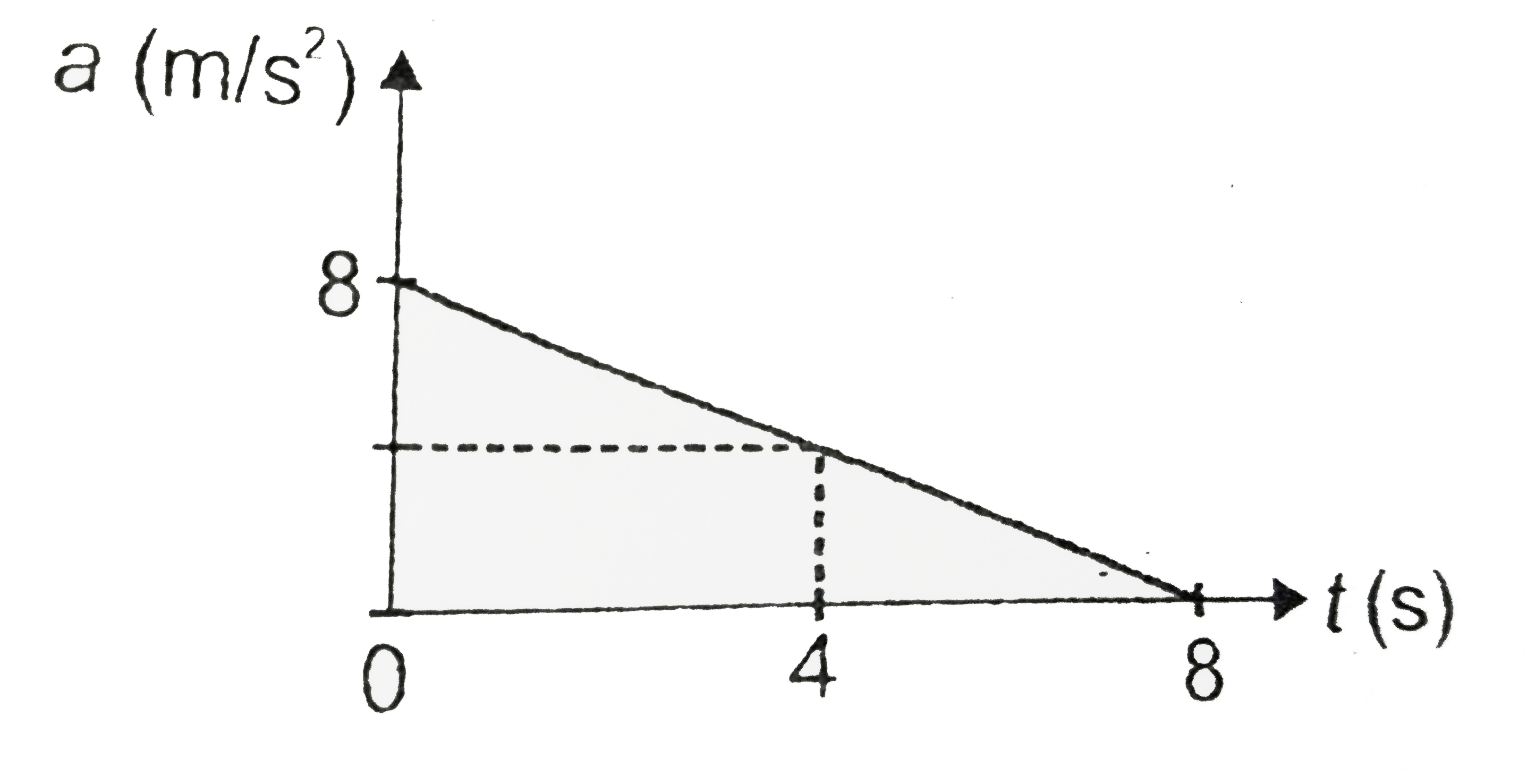A particle is moving along the x-axis with an acceleration a = 2x where a is in ms–2andx is in metre. If the particle starts from rest at x=1 m, find its velocity when it reaches the position x = 3.
8 m/s
16 m/s
4 m/s
0 m/s
To solve the problem step by step, we will use the relationship between acceleration, velocity, and displacement.
Step 1: Understand the relationship between acceleration, velocity, and displacement
Given that the acceleration a is defined as:
a=dvdt=2x
We can rewrite this using the chain rule:
a=dvdx⋅dxdt=vdvdx
Thus, we have:
vdvdx=2x
Step 2: Rearranging the equation
We can rearrange the equation to separate variables:
vdv=2xdx
Step 3: Integrate both sides
Now we will integrate both sides. The left side will be integrated with respect to v and the right side with respect to x:
∫vdv=∫2xdx
This gives us:
v22=x2+C
where C is the constant of integration.
Step 4: Determine the constant of integration
We know that the particle starts from rest at x=1 m, which means:
- When x=1, v=0.
Substituting these values into the equation:
022=12+C⟹0=1+C⟹C=−1
Step 5: Substitute the constant back into the equation
Now we substitute C back into the equation:
v22=x2−1
Multiplying through by 2 gives:
v2=2(x2−1)
Step 6: Find the velocity at x=3
Now we need to find the velocity when x=3:
v2=2(32−1)=2(9−1)=2×8=16
Taking the square root gives:
v=√16=4m/s
Final Answer
The velocity of the particle when it reaches the position x=3 m is 4m/s.
---
Given that the acceleration a is defined as:
a=dvdt=2x
We can rewrite this using the chain rule:
a=dvdx⋅dxdt=vdvdx
Thus, we have:
vdvdx=2x
We can rearrange the equation to separate variables:
vdv=2xdx
Now we will integrate both sides. The left side will be integrated with respect to v and the right side with respect to x:
∫vdv=∫2xdx
This gives us:
v22=x2+C
where C is the constant of integration.
We know that the particle starts from rest at x=1 m, which means:
- When x=1, v=0.
022=12+C⟹0=1+C⟹C=−1
Now we substitute C back into the equation:
v22=x2−1
Multiplying through by 2 gives:
v2=2(x2−1)
Now we need to find the velocity when x=3:
v2=2(32−1)=2(9−1)=2×8=16
Taking the square root gives:
v=√16=4m/s
The velocity of the particle when it reaches the position x=3 m is 4m/s.
Similar Questions
A particle moves along "x" -axis with an acceleration a=12x2ms−2 .The particle has zero velocity at "x=(-2)m" .Find the velocity of the particle (in m/sec)as it passes through origin.
View SolutionA particle moves along x-axis with acceleration a=6(t−1) where t is in second. If the particle is initially at the origin and it moves along positive x-axis with v0=2m/s, find the nature of motion of the particle.
View Solution
Knowledge Check
Acceleration of a particle moving along the x-axis is defined by the law a=−4x, where a is in m/s2 and x is in meters. At the instant t=0, the particle passes the origin with a velocity of 2m/s moving in the positive x-direction.
(a) Find its velocity v as function of its position coordinates.
(b) find its position x as function of time t.
(c) Find the maximum distance it can go away from the origin.Av=2√2−x2Bv=3√1−x2Cv=2√1−x3Dv=2√1−x2A particle is performing SHM along x-axis such that its acceleration along x-axis is : a=2−x where a is in m/s2 and x is in meter. If speed of the particle at x = 1 is zero in INCORRECT statement is :
Atime period of oscillation is π secondBamplitude of oscillation is 1 mCspeed of the particle at x=2.5m is √32 m/sDspeed of particle at x = 3 m is zeroA particle is moving along the x-axis whose acceleration is given by a=3x−4, where x is the location of the particle. At t = 0, the particle is at rest at x=4/3m. The distance travelled by the particles in 5 s is
AzeroB42 mCInfiniteDNone of these
A particle is moving along x-direction with a constant acceleration a. The particle starts from x=x0 position with initial velocity u. We can define the position of the particle with time by the relation
x=x0+ut+12at2
plot the position of the particle in relation with time is following situations
(i) If initial position of the particle is on negativ x-axis, initial velocity is positive and acceleration is negative.
(ii) If initial position is positive, initial velocity is negative and acceleration is positive.
View SolutionThe position of the particle moving along x-axis is given by x=2t−3t2+t3 where x is in mt and t is in second.The velocity of the particle at t=2sec is
View SolutionThe acceleration-time graph of a particle moving along x-axis is shown in the figure. If the particle starts with velocity 3 m/s at t = 0, find the velocity of particle at t = 4 s.

View SolutionA particle of mass m moves on positive x-axis under the influence of force acting towards the origin given by −kx2ˆi. If the particle starts from rest at x=a, the speed it will attain when it crosses the origin is
View SolutionA body is moving along the +ve x-axis with uniform acceleration of −4ms−2. Its velocity at x=0 is 10ms−1. The time taken by the body to reach a point at x=12m is
View Solution